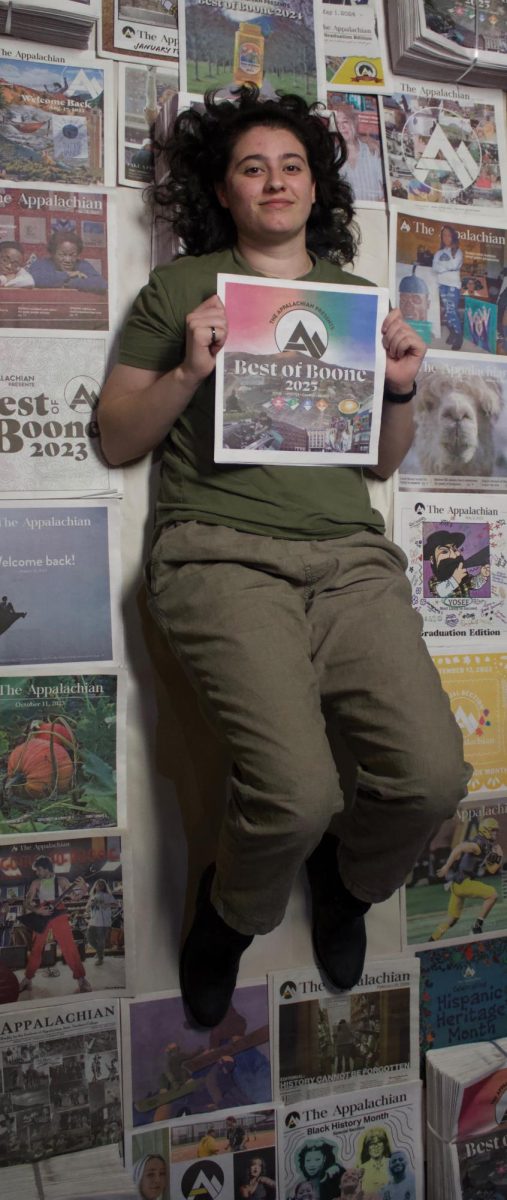As a Latine member, I carry Día de los Muertos near and dear to my heart. It’s a holiday of my culture that honors the dead Nov. 1-2; Nov. 1 honors the lives of departed children, and Nov. 2 honors both the lives of adults and all spirits. The essence of this holiday is to celebrate the death and life of our loved ones, with little to no fear about our demise. It allows for the spirits of our loved ones to return to the world of the living to be reunited. These days feel bittersweet, yet choosing to remember instead of mourn for someone provides the living with annual chances to reconnect with the deceased, and continue in their memory. While some may scoff at the premise of Día de los Muertos, the cultural importance this holiday carries for many overrides it.
There are multiple traditions that are unique to Día de los Muertos, starting with the ofrenda. The creation of the ofrenda is incredibly important to the celebration of our loved one’s lives.The ofrenda is a visual offering for the deceased and it’s decorated with trinkets and items that are identifiable with them. These items can be anything, from food to objects, and the sentiments and emotions they carry are essential to the ritual.
There is also the inclusion of a photograph of the person to remember their face. In remembering the person, there is strong value in being able to picture and visualize them in your mind, and having them with you at all times. Ofrendas have either a single tier or multiple tiers that represent earth, heaven and the underworld. The deceased person’s stages of life and more depend on each person. The visual component is to guide the spirits back to their ofrenda and be with their living loved ones again.
The cempasúchiles, formally known as Aztec marigolds, are my favorite details in the festivities. The vibrant colors of the cempasúchiles are said to guide the souls of the dead from their burial grounds to their families home in order to be present in their lives for the remainder of the holiday. The flower is native to Mexico and South Carolina, making it easily accessible for the vast parades and marches held throughout the country.
I have fond memories of my parents bringing home fresh cempasúchil, allowing us to smell it before handing it out to our family members to have for the holiday. Being in college, celebrating the holiday becomes a bit more complicated, but I do my best to obtain cempasúchil and to carry my ancestors with me on Nov. 1-2.
Día de los Muertos focuses on an important part of my culture; honoring our elders and loved ones. The valuing of older generations comes from our family values, in which family is more important than other things in life. I prioritize my family over a lot of things, but here in the U.S., the same sentiment doesn’t seem to be reflected. Elders are appreciated here, but most have the idea of putting them in retirement homes, or in rare cases, mooching off their benefits. In my culture, we are called to honor our elders and to return to them the hard work and effort they put into raising us.
During these two days, our elders are still remembered and respected, and they will continue for generations to come. Loved ones outside of our families are also honored in these celebrations, as anyone who has touched our lives in immeasurable ways is someone who is honored in our ofrendas and memories.
A saying for this holiday is that our loved ones are not dead until we forget them. When we lose the ability to have joy in remembering lives, we lose a part of ourselves and our people. In Mexico, the celebrations of Día de los Muertos are vibrant, grand and incredibly meaningful. The displays, ofrendas and decorations galore truly hone in on the message of this holiday: to embrace death and enjoy the moments you share with others. I hope to one day visit my home country and experience this, and to give my respects to my ancestors who I’ve never met before.
Honoring the dead is not solely for Día de los Muertos; in fact multiple cultures partake in it as well. While it differs in the traditions practiced, religions and other factors, there is something to say regarding how each perceives death.
Death is something that we choose to celebrate, not mourn. I find that by celebrating Día de los Muertos, I have less of a fear of death compared to others. I understand that my life is not forever, nor my loved ones. It makes my time with them that much more precious, for tomorrow is never guaranteed. Over the years, I find myself more empathetic to others, relating to death or other topics. I’ve been told I’m too emotional, I easily cry or feel too much for others. I’ve never seen it as a weakness of mine. Death is a universal experience that we all go through, so why keep our conversations about it so secretive?
Culture is not a costume, and it’s a saying that unfortunately needs repeating every year. I, alongside my community, find it insulting when people dress up as a figure known as The Catrina, or a skeleton and call themselves a “Day of the Dead Skeleton.” Any form of cultural appropriation is disrespectful towards us. I saw one last Halloween weekend, and I was shocked. It’s upsetting to see people take something so precious from my culture and spin it for their own gain. It’s a common theme in my articles that tell people to educate themselves, and one I won’t stop spreading. So please, have some respect and kindness not just now, but always.














